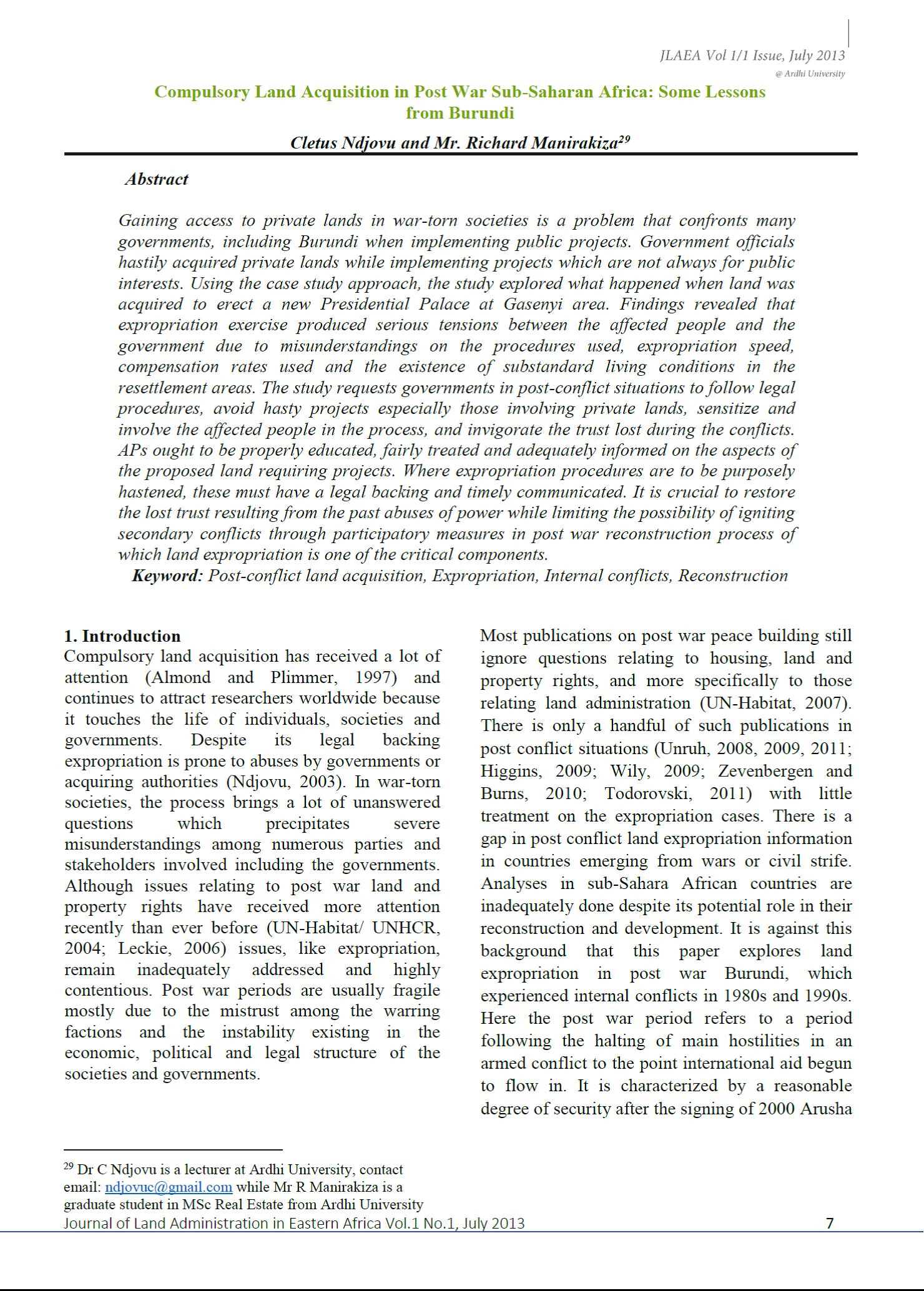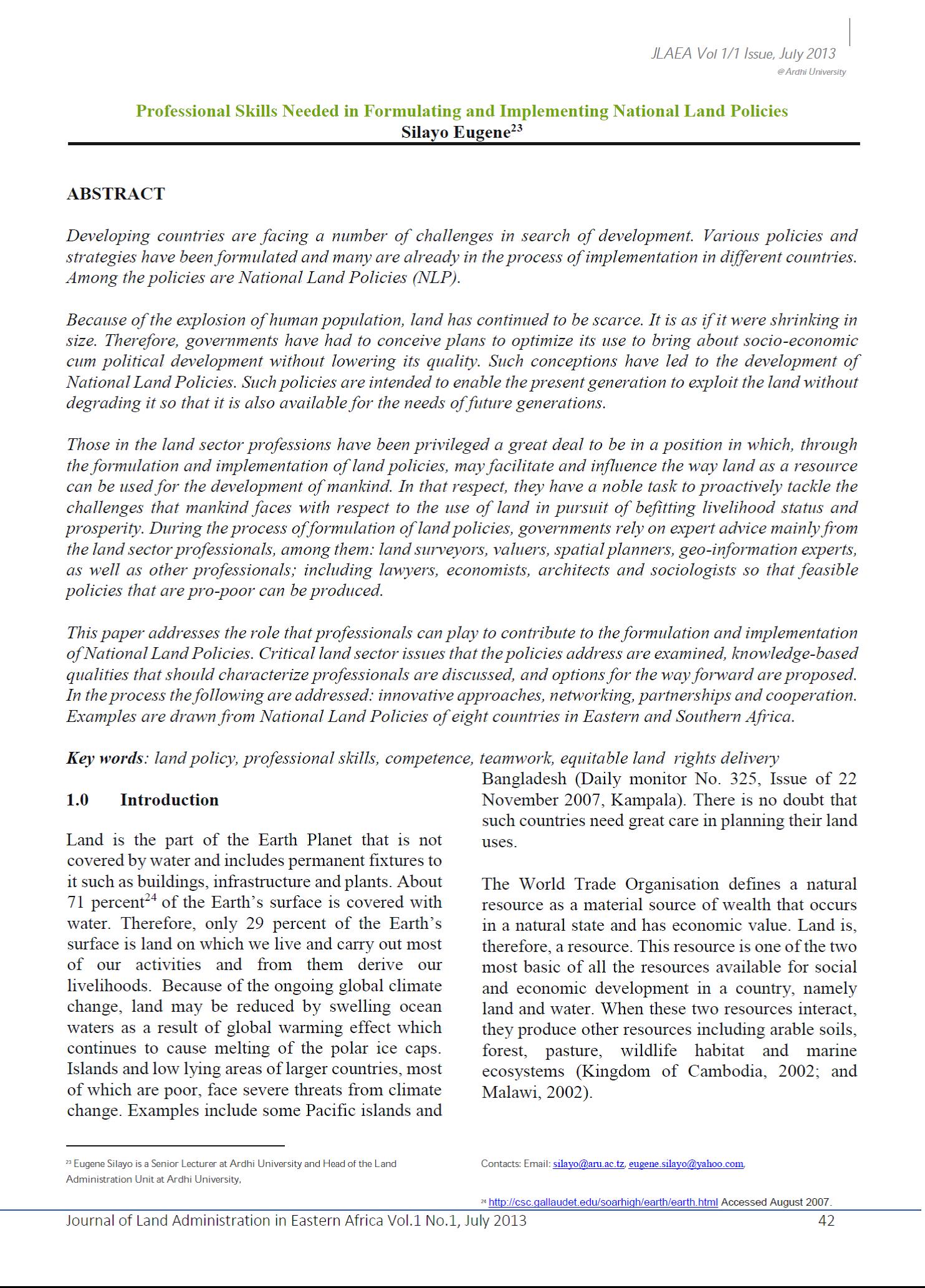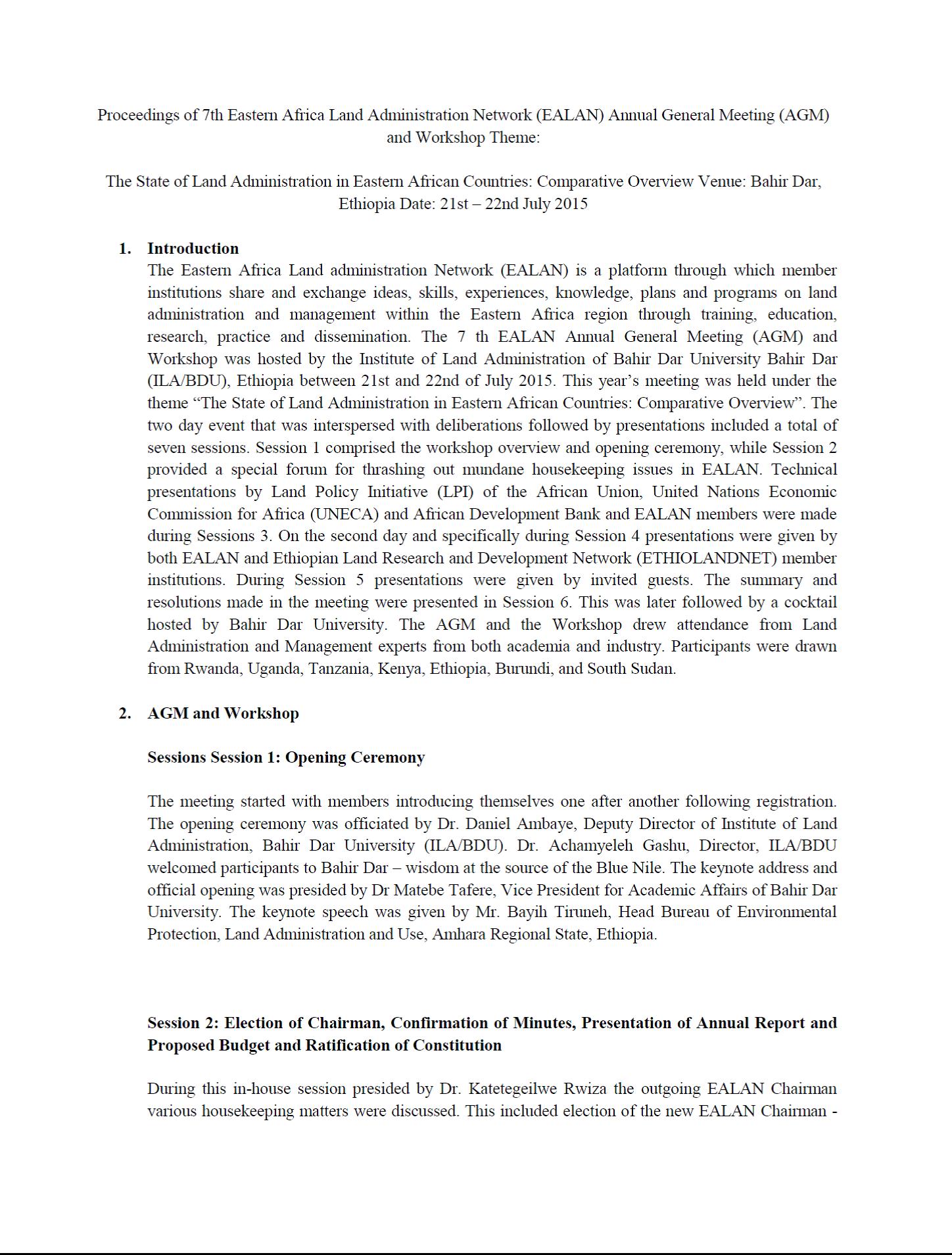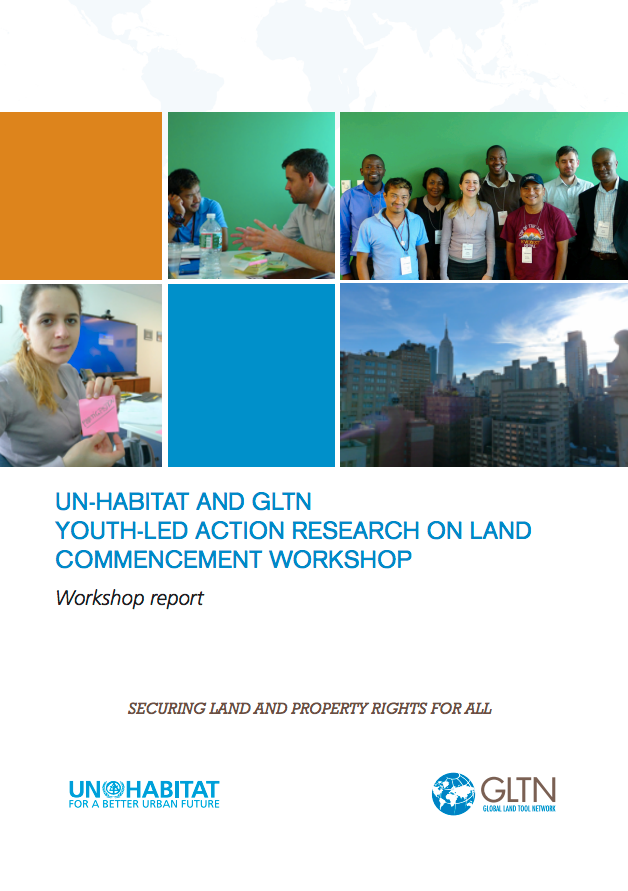Compulsory Land Acquisition in Post War Sub-Saharan Africa: Some Lessons from Burundi
Gaining access to private lands in war-torn societies is a problem that confronts many governments, including Burundi when implementing public projects. Government officials hastily acquired private lands while implementing projects which are not always for public interests. Using the case study approach, the study explored what happened when land was acquired to erect a new Presidential Palace at Gasenyi area.







